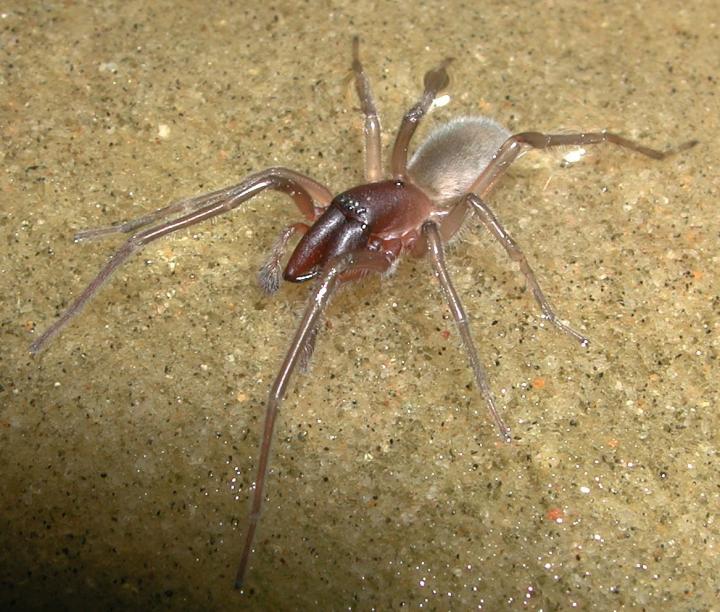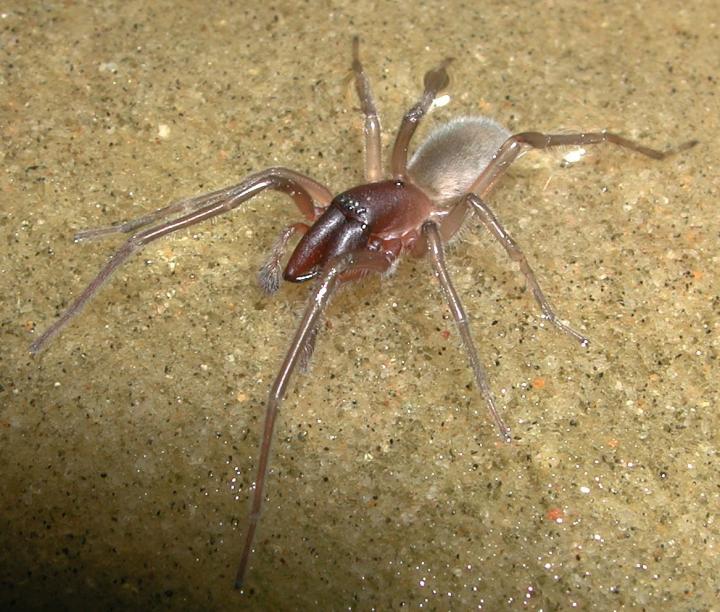
Credit: R. Raven
It was 02:00h on 11 January 2009 when the sea along the coastline of Australia's "Sunshine State" of Queensland receded to such an extent that it exposed a population of water-adapted spiders. The observant researchers who would later describe these spiders as a species new to science, were quick to associate their emergence with reggae legend Bob Marley and his song "High Tide or Low Tide".
In their paper, published in the open access journal Evolutionary Systematics, the team of Drs. Barbara Baehr, Robert Raven and Danilo Harms, affiliated with Queensland Museum and the University of Hamburg, describe the new Bob Marley's intertidal spider and also provide new information on two of its previously known, yet understudied, relatives from Samoa and Western Australia.
Unlike the spiders which people are familiar with, the intertidal species, whose representative is Bob Marley's namesake, are truly marine. They have adapted to the underwater life by hiding in barnacle shells, corals or kelp holdfast during high tide. To breathe, they build air chambers from silk. Once the sea water recedes, though, they are out and about hunting small invertebrates that roam the surfaces of the nearby rocks, corals and plants.
The new species, listed under the scientific name of Desis bobmarleyi, is described based on male and female specimens spotted and collected from brain coral on that night in January.
Both sexes are characterised by predominantly red-brown colours, while their legs are orange-brown and covered with a dense layer of long, thin and dark grey hair-like structures. The females appear to be larger in size with the studied specimen measuring nearly 9 mm, whereas the male was about 6 mm long.
While the exact distribution range of the newly described species remains unknown, it is currently recorded from the intertidal zones of the Great Barrier Reef on the north-eastern coast of Queensland.
"The song 'High Tide or Low Tide' promotes love and friendship through all struggles of life," explain the authors for their curious choice of a name. "It is his music that aided a field trip to Port Douglas in coastal Queensland, Australia, to collect spiders with a highly unique biology."
Apart from reporting their research, the scientists use their paper to pay tribute to a German naturalist from the late 19th century – Amalie Dietrich, as well as the famous Jamaican singer and songwriter. Both admirable figures, even if representative of very different fields, are seen by the authors as examples of "the adventurous and resilient at heart" human nature in pursuit of freedom and independence.
###
Original source:
Baehr BC, Raven R, Harms D (2017) "High Tide or Low Tide": Desis bobmarleyi sp. n., a new spider from coral reefs in Australia's Sunshine State and its relative from Sāmoa (Araneae, Desidae, Desis). Evolutionary Systematics 1: 111-120. https://doi.org/10.3897/evolsyst.1.15735
Media Contact
Barbara C. Baehr
[email protected]
@Pensoft
http://www.pensoft.net
Related Journal Article
http://dx.doi.org/10.3897/evolsyst.1.15735





